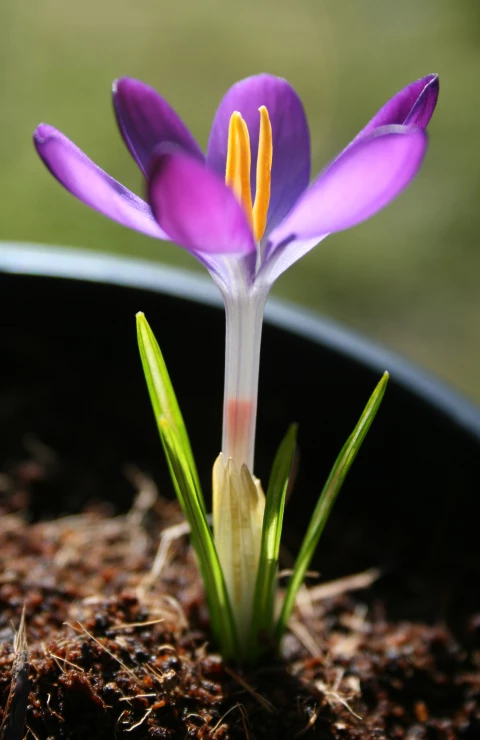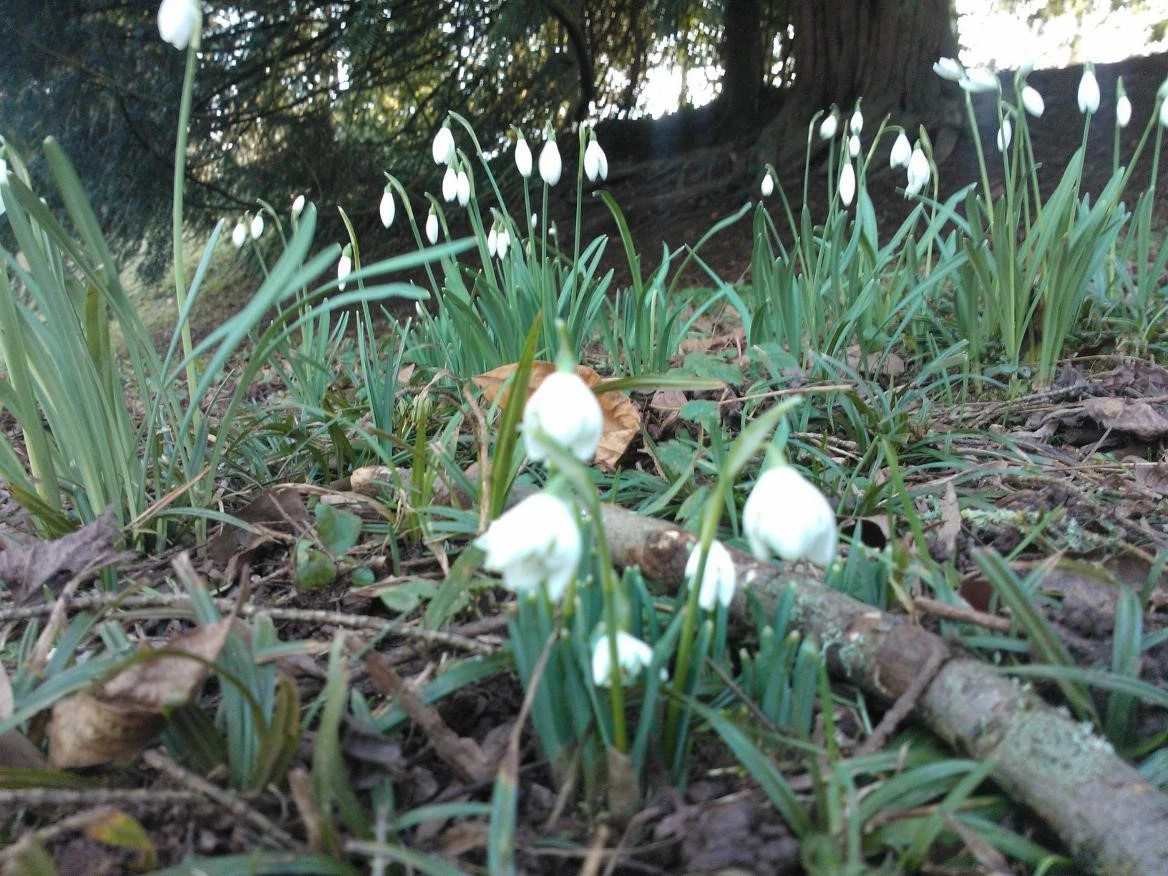Hello Bulb Buddies,
I would like to share a humorous rhyme from R at Thorn Primary School: "If I was a dog and you were a flower I’d lift my leg and give you a shower!"
Thorn Primary School: What happens to the plants after they have flowered? Do they die? Prof P: Hi Thorn Primary School. This is a very important question. Your bulbs won’t die after they have flowered! The leaves of your plant make food and the roots absorb water. When your flower dies the bulb stores all remaining food and water inside itself ready for next Autumn. Your teacher has information on how to care for your bulbs after your flowers die, and I will blog about it closer to the time. But this won’t happen until the end of Spring – so enjoy your flowers while they are here!
Skelmorlie Primary School: This week we have had a lot of snow and sleet in our weather. It has been really cold so we have had to look out for ice when we are playing too. In our water gauge this week, there was around 13 mm of water and 37 mm of ice/snow. Prof P: Hi Skelmorlie Primary School. I’m glad to hear you are being careful when you are outside, the weather can cause dangerous conditions! I’m assuming you melted the 37mm of snow to 13mm of water. Was there less water than you thought there would be? This is because water expands when it freezes and evaporates when it heats! I’d like to thank you for all the weekly comments you have sent me – you are definitely Super Scientists!
St. Ignatius Primary School: Professor Plant we missed some recordings this week due to the bad weather here. Our teacher decided it was not safe enough for us to go out and collect the recordings. Today we had a big piece of ice in our rainfall gauge so if that melted our rainfall would be more. The raifall gauge was also this full as it includes the 3 days we didn't take recordings. St. Ignatius Primary 4. Prof P: Hello St Ignatius Primary 4. Not to worry about missing some recordings due to bad weather – if it’s icy it’s better to stay warm and safe! As for the block of ice, you are not the only school to have had this problem. If this happens again please take your rain gauge inside and wait for the ice to melt. Then record the water level as rain fall on your weather chart!
Morningside Primary School: We brought our rain gauge in on Monday as it was full of snow and let it melt before we took the measurement. Prof P: Well done Morningside Primary School, you really are Super Scientists! I hope you enjoyed the experiment. I always try to guess how much water there will be when the ice melts! Other schools have had the chance to do this experiment too, including Corshill Primary School.
Chryston Primary School: We are terribly sorry that we could not finish our records last week. We have been very busy with our Scottish afternoon and the weather here has been horrible. Hopefully we will finish our records next week. Prof P: Not to worry Chryston Primary School. Scottish afternoon sounds exciting! I hope you had a good week!
Thorn Primary School: We had lots of snow this week as well as lots of ice! We have no recording for Thursday as our school was closed due to the ice making it unsafe for staff and children to arrive. Prof P: Not to worry Thorn Primary School, other schools were unable to complete their records due to bad weather too! And lots of schools have reported snow, including: Woodlands Primary School, St. Brigid's School, Ysgol Hiraddug, Abbey Primary School, Manor Road Primary School, Rivington Foundation Primary School, Bickerstaffe CE Primary School and Balshaw Lane Community Primary School.
Our Lady of Peace Primary School: It has been very windy,snowy and icy. Two girls fell today at playtime and lunchtime on the ice and hurt themselves. It snowed last Tuesday and Wednesday. The two girl that fell are the girls that wrote this. Prof P: Hello, I’m sorry to hear you fell on the ice! I hope you weren’t badly hurt! I hope children at other schools take note and that everyone is extra careful when outdoors in this weather!
Ysgol Y Plas: Dear professor plant I thought you would like to know that nineteen bulbs in the flower bed have been growing and sixteen in the pots have started as well. From C. Prof P: Hi C, that’s great news! Other schools have reported new shoots too, including Skelmorlie Primary School!
Tongwynlais Primary School: We have no rain records for monday and tuesday as a few of our fellow pupils have been playing with our rain gage. We hope we can collect more accurate measurements next week. Prof P: Thank you for letting me know TongwynlaisPrimary School. Other schools have been having problems with their rain gauges too. Including Euxton Church of England Primary School whose rain gauge has been repeatedly knocked over by football players! They have found a new location for their rain gauge now.
Darran Park Primary: I have got a new friend doing this job now - he enjoys doing it !!!!!!!!!!!!!!!!!!!!!!!!!!!!!!!!!!!! Prof P: Haha, well I’m guessing that not everyone at Darran Park Primary is enjoying this project! I hope your new friend can show you how much fun science can be and that you come to enjoy the project as much as he does!
The Blessed Sacrament Catholic Primary School: It has been really icy in the mornings but the daffodil shoots are getting taller. F. Prof P: Good to know F. You must be looking after them very well!
Bancyfelin: 1 mm of snow fell on Thursday 29th of January. This means that 4mm of rain + 1mm of snow fell on this day. Prof P: Well done Bancyfelin. I assume you measured the snow using snow sticks? I see you recorded 4mm of rain, so I assume the snow melted in your rain gauge!
Baird Memorial Primary School: We are surprised by the changes that occurred within the temperature side of things. The changes were dramatic. Prof P: Hi Baird Memorial Primary School. You are right, there is quite a jump in your temperature readings from -1°c on Thursday to 11°c on Friday! This shows how temperamental the weather can be. Drops in temperature are often caused by cold winds, clouds and precipitation (rain and snow).
Ysgol Nant Y Coed: We enjoyed doing we like doing it very much its so FUN!!!! This is are last time doing it :(wahhhhhhhh we wish we could do it again-S and A. Prof P: Hi S & A! I’m glad you are enjoying the project and I hope you have learnt a lot! There are other scientific experiments you can take part in. I’m guessing its someone else’s turn to take the temperature and rain fall readings for this project now. But you could easily do a similar experiment at home! The MET Office have a Weather Observation Website (WOW) where they ask people to document temperature reading from their area. This information then helps Meteorologists to build a clearer picture of weather patterns across the UK. You can take part here: http://wow.metoffice.gov.uk/weather/manual .
Ysgol Clocaenog: Heddiw, rydym wedi gweld bod ein cennin pedr yn dechrau tyfu. Mae cennin pedr K wedi tyfu 1.5cm. Mae rhai ohonynt dal heb ddechrau eto. Athro'r Ardd: Wel, rwy'n falch o glywed bod eich Cennin Pedr wedi cychwyn tyfu. Mae'n swnio fel bod bwlb K yn tyfu yn gyflym iawn! Daliwch ati gyda'r gwaith da Ysgol Clocaenog!
Keep up the good work Bulb Buddies!!
Professor Plant




